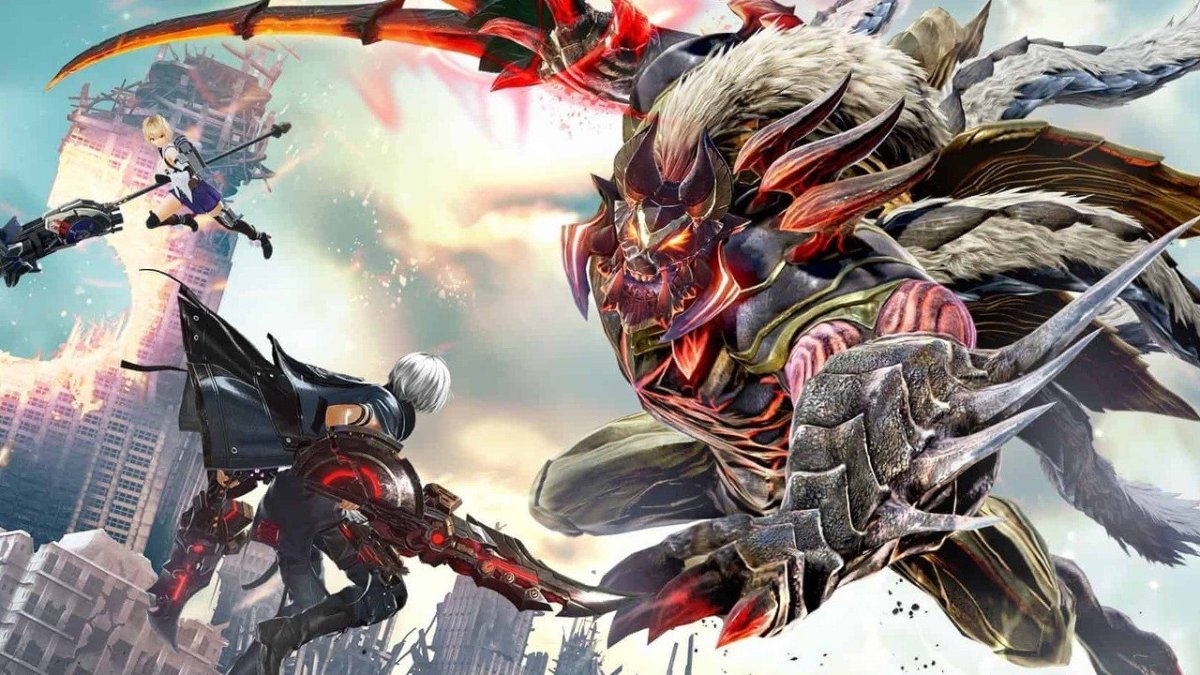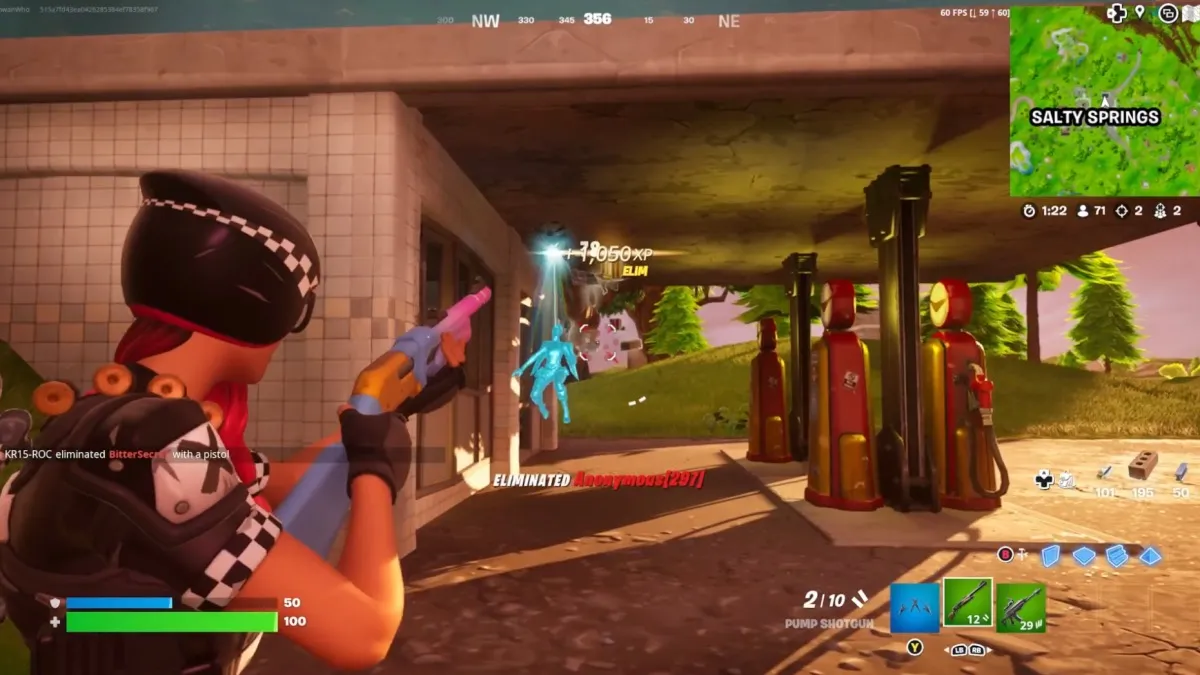God Eater 3 on PlayStation 4
When the very first God Eater released in 2010, its Monster Hunter inspirations were completely clear, as much of what it did aped Capcom’s popular hunting franchise. After nine years, however, God Eater 3 staunchly has an identity of its own, and one that I enjoyed immensely despite some lingering issues.
God Eater 3 takes place in the same world as the rest of the series, but it’s mostly a standalone story. The world has been ravaged by terrifying beasts known as Aragami, and to make matters worse a new phenomenon known as “Ash Storms” has rendered much of the planet unlivable.
Ash Storms can quickly kill anyone that enters, even God Eaters, but a new type called Adaptive God Eaters (AGE) have enhanced capabilities that grant them heightened powers. You are one of these AGEs and the story starts with you as a prisoner in Pennywort, a port mercilessly using you and your other AGE friends like cattle to do their bidding.
I have some experience with past God Eater games, and story was never something that stood out to me in the past. That’s not to say the first two games had terrible stories, just nothing that felt outstanding. Considering this, I found myself quite surprised by God Eater 3’s story, which manages to presents some fascinating characters and a mostly interesting narrative.
The story revolves around you and the other AGEs gaining your freedom, and building a life for yourselves, but in the process finding out some massive secrets about the state of the world and the organizations that rule it. Strong characters are at the heart of everything, like Hugo the charismatic and headstrong leader of the bunch, or Claire the determined Gleipnir soldier.
Comparatively to past games, God Eater 3 does a much better job of pacing its story, and providing a decent amount against the amount of missions you’re playing. Of course, the bulk of the game is still spent on hunting missions where you’re tracking down Aragami.
Considering this is a hunting game, God Eater 3’s gameplay is separated out into a ton of different missions, both ones you have to complete for the story and optional. Each mission you embark on takes you to a small contained map, where you’ll need to find and kill a specific Aragami.
In between each mission you’ll return to your home base where you can craft new weapons/items, setup abilities, and talk to all of your friend and allies.
Setup plays a vitally important part, and God Eater 3 gives you a ton, and I mean a ton, of different options for outfitting and customizing your character. In fact, there are so many options in the game that it can be overwhelming at first, and you’ll still be introduced to new elements hours into the game.
Again, this is par for the course for hunting games, and series like Monster Hunter do the same thing. The first choice comes with your weapon, and there’s a wide array from dual blades to scythes and lances. You immediately start of with all weapon types available, and each one functions completely different.

Added onto your main weapon is a gun form and a shield, and you can craft and upgrade to new forms for all of these. Each main weapon has various “Burst Artes” that you can equip that change a specific attack or combo when you’re in Burst Mode. To enter Burst Mode you need to use a Devour Attack on Aragami, mapped to holding down triangle or R1+triangle.
Things only get more complex from here with different elemental bullet types on your guns, Acceleration Triggers that activate as you meet requirements, Burst Control Units, and Engage abilities that let you link up with your party members.
It almost goes without saying that God Eater 3 is complex, but the game does have a decent tutorial system and the more you play around with all of the various effects and options, the more you’ll become familiar with everything.
Of course, if you want to craft stronger weapons you’ll also need to get familiar with the material system and go out to gather new materials as well as craft them at the base.
The good news is that all of these options allow for highly customizable play styles, which definitely helps with the game’s fast and frenetic combat.
Battles are ridiculously fast-paced in God Eater 3, with you and your team pulling off huge combos, leaping around everywhere, using items, and switching to gun mode. Aragami are tough customers, and every encounter with medium or large sized ones really feels like an intense anime battle.
God Eater 3’s gorgeous aesthetic really makes combos and special attacks pop off the screen, and you constantly need to adapt to each battle and how tough a specific Aragami is. Despite having all these combos and options, God Eater 3 controls surprisingly well and it really comes down to knowing the exact pattern of each of your attacks, and how to fit gun attacks and guarding in there.
As much as I enjoy the core combat of God Eater 3, it does deserve mention that things can get a little repetitive. The story definitely keeps things interesting, but the fact of the matter is every mission is hunting down an Argami and engaging in a massive battle. There’s not a lot of diversity here.
Luckily, each of the weapons in the game are so different that you can switch to a new one to shake things up a little. God Eater 3’s multiplayer also provides some variation, letting you play co-op on story missions with friends or other players. The real appeal of multiplayer, though, lies with Assault Missions.
As you progress through the story you’ll unlock more Assault Missions, and each one tasks a team of eight players with taking down a fearsome Aragami boss. These battles are where God Eater 3’s combat shines, and having eight players take on a boss is pure adrenaline-fueled chaos.
Each of these missions has a time limit of only five minutes, so it’s an all-out blitz of everyone using absolutely everything at their disposal, and the rewards for completing Assault Missions are easily worth it, giving you tons of gold and materials.

Of course, if you aren’t playing multiplayer you’ll be able to take up to three AI party members with you on each story mission, and I consistently found myself surprised by how good the allied AI was.
Your party members are just as useful as you are, and they each fulfill a different role, doing a decent job of healing teammates if they have the ability, or trying to stagger bosses if that’s their focus. You can customize these AI partners with a ton of different skills, tuning them to the way you want them to play.
I didn’t really run into any technical problems or graphical hiccups while playing God Eater 3; however, there is a strange blur effect applied in some cutscenes that really makes the sides of some character models fuzzy. I’m not quite sure why this effect is there, and it’s certainly not in most cutscenes, but it can be a bit distracting in a few of them.
The phenomenal soundtrack of God Eater 3 also deserves special mention. Composed by the talented Go Shiina (Tales of Zestiria and Mr. Driller), the game sports an epic orchestral score that really ups the tension and feeling of each battle.
The soundtrack constantly does a great job of setting the tone for the game, and it’s backed up by generally good voice acting across the board.
I’d always had a hard time getting into the God Eater series before, but God Eater 3 grabbed me in a way the others didn’t. I’m not one hundred percent sure why as the core combat and systems are the same as the previous games, but something about God Eater 3’s story and gameplay loop just felt more balanced and well-paced.
The complexity of the game can definitely be a huge barrier to entry, and there’s a repetitiveness that comes with hunting games that might turn you off if that’s not something you enjoy. Still, God Eater 3 functions as a strong, complex JRPG and a good way to test out the series if you’ve been curious this whole time.
Score: 4/5 – Great
For more information on how we review games, check out Twinfinite’s review policy here.














Updated: Apr 12, 2019 01:27 pm